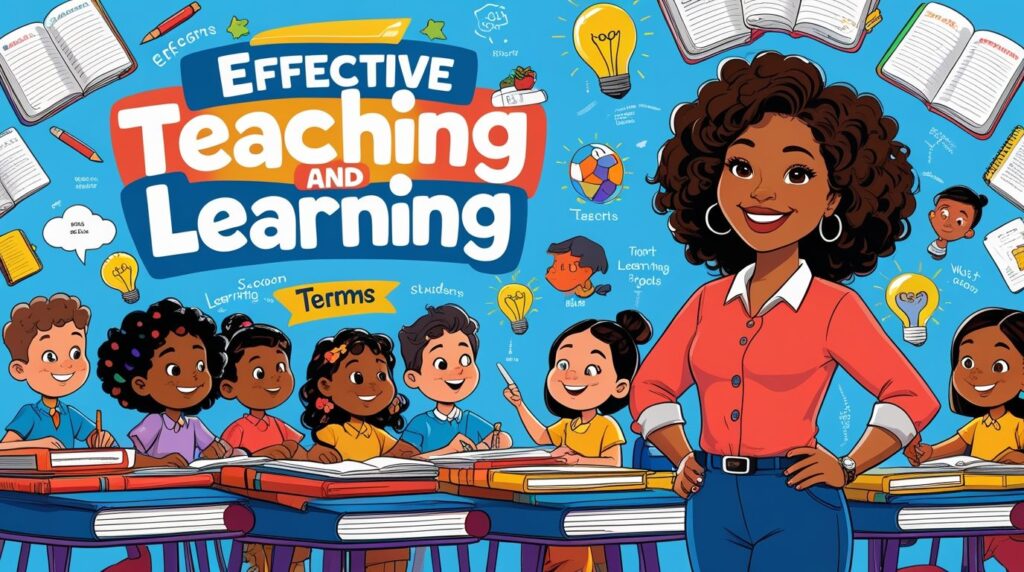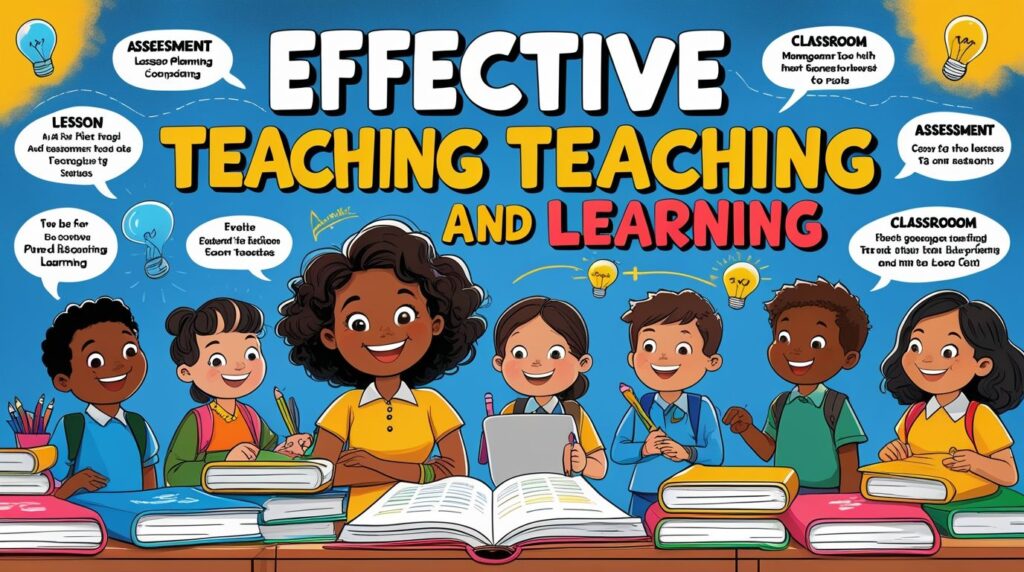Introduction
Teachers’ Manuals in Education, Teachers’ manuals play a central role in modern education. They guide teachers in planning lessons, managing learning tasks, and improving instructional quality. These manuals usually provide structured chapters, clear goals, and practical teaching strategies. Moreover, they ensure that teachers maintain uniformity in content delivery. Therefore, they support both new and experienced teachers. Because the classroom environment is fast-changing, teachers need dependable resources. Manuals fill this gap with reliable information. Additionally, they offer tips for assessment, classroom activities, and differentiated learning. As a result, teachers can improve their teaching approach. In essence, a teacher’s manual acts as a roadmap. It keeps learning aligned with curriculum standards. Furthermore, it saves time in planning and execution. Hence, teachers’ manuals have become essential for effective teaching and productive learning.
Purpose of Teachers’ Manuals
The primary purpose of teachers’ manuals is to provide step-by-step guidance. They help teachers plan lessons that match educational standards. Manuals also ensure that teaching remains consistent across classes. In addition, they offer helpful examples, worksheets, and ideas. This support simplifies the teaching process. Therefore, even new teachers can perform confidently. These manuals also promote clear communication between teachers and curriculum developers. Moreover, they serve as reference tools during difficult lessons. Teachers can consult them to clarify concepts. Consequently, they enhance teaching quality. Manuals also support teachers in preparing assessments. They outline sample questions and marking schemes. Because of this support, teachers can evaluate students fairly. Overall, teachers’ manuals strengthen the teaching system by offering structured guidance and promoting professional practice.
Components of an Effective Teachers’ Manual
A strong teachers’ manual contains several key components. First, it provides a clear outline of learning objectives. These objectives show teachers what students must achieve. Second, it includes detailed lesson plans. These plans guide teachers step-by-step. Third, the manual offers teaching strategies. These may include group work, discussions, activities, and demonstrations. Moreover, it provides worksheets and examples. These materials help teachers implement lessons easily. Additionally, the manual describes evaluation methods. Teachers learn how to assess learning outcomes. Another important element is time management. Manuals show how to divide lessons efficiently. They also contain background knowledge for teachers. This supports teachers in explaining difficult concepts. Altogether, these components ensure that the manual becomes a complete support tool. Therefore, a good teachers’ manual improves both teaching and learning experiences.

Role of Teachers’ Manuals in Lesson Planning
Teachers’ manuals help teachers design structured lessons. They offer ready-made outlines, objectives, and teaching steps. Therefore, teachers save time when preparing lessons. The manual also ensures that lessons follow the curriculum. This prevents teachers from teaching unnecessary or wrong content. Moreover, the manual supports new teachers. They gain confidence by following prepared models. Additionally, manuals introduce varied activities. These activities help teachers make lessons engaging. As a result, students remain active and motivated. Teachers can also adapt these activities according to class needs. Because manuals promote flexible planning, they improve classroom performance. Furthermore, they include advice for handling different learning levels. Teachers learn how to adjust lessons for slow or advanced learners. Thus, teachers’ manuals play a major role in creating effective and organized lesson plans.
Teachers’ Manuals and Curriculum Alignment
One major function of teachers’ manuals is curriculum alignment. They ensure that all lessons match national standards. Therefore, teachers stay focused on required topics. Manuals explain how each chapter fits into the curriculum. They also highlight the competencies students must develop. Moreover, they help teachers maintain sequence. Lessons are taught in the correct order. Additionally, manuals prevent confusion by organizing concepts. They also provide examples that fit curriculum demands. Because of this support, teachers can deliver accurate content. Furthermore, manuals help schools maintain uniformity. Students in different classrooms learn the same content. This consistency benefits the education system. Finally, manuals help teachers track learning progress. They show which outcomes must be achieved at every stage. Thus, teachers’ manuals strengthen curriculum delivery and academic standards.
Teachers’ Manuals as Tools for Professional Development
Teachers’ manuals are not only guides for teaching. They also work as tools for professional growth. Manuals expose teachers to modern teaching strategies. They introduce new methodologies and examples. Therefore, teachers learn continuously. Moreover, manuals encourage reflective teaching. Teachers think about what works and what does not. They also improve their instructional skills. Additionally, manuals help teachers build confidence. They feel prepared before entering the classroom. Furthermore, manuals support new teachers in their early months. They reduce uncertainty and stress. Manuals also motivate teachers to try innovative activities. As a result, classroom engagement improves. Because manuals highlight best practices, they promote professional standards. They also help teachers stay updated with subject knowledge. Overall, teachers’ manuals contribute greatly to teachers’ long-term professional development.
Teachers’ Manuals and Classroom Management
Effective classroom management is essential for active learning. Teachers’ manuals provide practical guidelines for maintaining discipline. They offer strategies for organizing classrooms. Moreover, they suggest ways to handle disruptive behavior. Teachers also learn how to create a positive environment. Manuals outline routines and rules that help control the class. Additionally, they offer tips for managing group work and discussions. Because classrooms are diverse, manuals include ideas for handling different needs. Furthermore, they help teachers maintain smooth transitions between activities. Good management saves time and increases learning. The manual also provides examples of reward systems. These systems motivate students. Thus, teachers’ manuals support teachers in building orderly, well-managed classrooms. They improve student engagement and teaching effectiveness.
Use of Teachers’ Manuals in Assessment and Evaluation
Assessment is a critical part of teaching. Teachers’ manuals provide guidelines for preparing tests. They offer sample items, marking schemes, and rubrics. Therefore, teachers can design fair assessments. Manuals also help teachers evaluate learning outcomes. They explain how to measure student progress effectively. Moreover, they highlight different assessment types. These may include quizzes, projects, portfolios, or oral tests. Additionally, manuals help teachers understand grade-level expectations. This ensures accurate assessment. They also provide suggestions for feedback. Teachers learn how to give constructive remarks. Because of this guidance, teaching becomes more precise. Manuals also promote continuous assessment. This helps teachers adjust lessons according to student needs. Thus, teachers’ manuals improve the reliability of assessment and strengthen learning processes.
Teachers’ Manuals and Differentiated Instruction
Modern classrooms include students with varied abilities. Teachers’ manuals assist in meeting these diverse needs. They offer strategies for differentiated learning. Teachers learn how to modify lessons for slow learners. They also get tips for challenging fast learners. Moreover, manuals provide alternative activities. These activities suit different learning styles such as visual, auditory, or kinesthetic. Additionally, manuals help teachers design inclusive lessons. They offer examples for supporting special-needs students. As a result, every student gets equal learning opportunities. Manuals also encourage flexible grouping in class. This allows students to learn at their own pace. Furthermore, they promote adaptive teaching methods. Because of these supports, teachers can manage classroom diversity. Therefore, teachers’ manuals help create an inclusive environment where all students learn effectively.

Digital Teachers’ Manuals
Because of technological progress, digital teachers’ manuals are becoming popular. They offer multimedia features such as videos and animations. These tools help teachers understand concepts better. Moreover, digital manuals are easy to access. Teachers can use them on laptops or mobile phones. Additionally, they are frequently updated. This ensures that teachers use the latest content. Digital manuals also allow quick searching. Teachers can find lessons instantly. Furthermore, they include interactive lesson plans. These features make teaching more engaging. They also support remote learning. As online education grows, digital manuals become essential. Moreover, they save paper and reduce printing costs. They also allow collaboration among teachers. As a result, teaching becomes more efficient. Therefore, digital teachers’ manuals represent a modern step toward improved teaching resources.
Challenges in Using Teachers’ Manuals
Although teachers’ manuals are helpful, they face several challenges. Some manuals are outdated. They do not match modern teaching needs. Moreover, some teachers rely too heavily on them. This reduces creativity in teaching. Additionally, manuals may be poorly organized. Teachers may find them difficult to use. Another challenge is lack of localization. Some manuals do not match classroom realities. Therefore, teachers must adapt them. Furthermore, digital manuals may require technical skills. Some teachers struggle with technology. Also, limited training may prevent proper use. In many schools, manuals are not regularly updated. This weakens their usefulness. Finally, manuals may lack cultural relevance. They may not reflect students’ experiences. Thus, despite their benefits, teachers’ manuals need improvement for effective use.
Conclusion
Teachers’ manuals are essential teaching tools. They guide teachers with structured lesson plans, strategies, and assessments. Because they ensure curriculum alignment, they improve learning outcomes. Moreover, they support professional development and classroom management. Digital manuals further enhance teaching through technology. However, challenges exist, such as outdated content and low teacher training. Therefore, regular updates and teacher support are necessary. In short, teachers’ manuals remain vital for effective teaching and successful learning.

trips to finland The views were breathtaking and the tour well paced. https://pamukkaledaytrip.com/tour/4-day-dalyan-%E2%86%92-fethiye-%E2%86%92-xanthos-%E2%86%92-patara-letoon-tour-from-bodrum/